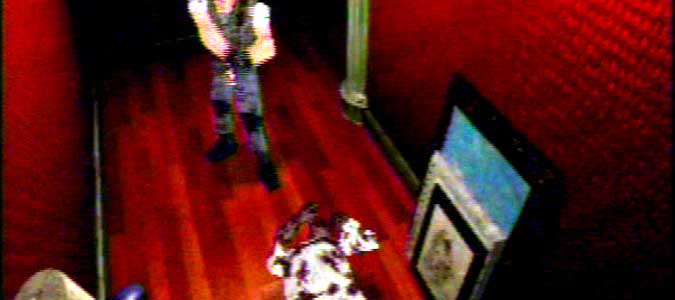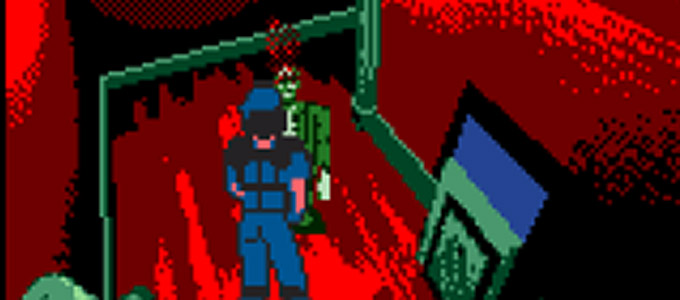This page may contain one or more affiliate links, which means that if you purchase a product through that link, I may receive compensation. The links will be identified with the text "affiliate link". Click to learn more.
Did you know Resident Evil was developed for the Game Boy? After the success of Resident Evil (aka Bio Hazard) development began for a Game Boy Color version. I remember reading about this in GamePro magazine and thinking it was an impossible task. Resident Evil was a 3D game. The Game Boy was not a powerful platform, and could not handle 3D.
It turned out I was right and wrong about Resident Evil on the Game Boy Color. The game was cancelled, and was never released. But in February 2012, a copy of the prototype game found its way online, and it was near completion. So what happened? Well let me say that several things are missing from the game, such as certain enemies and weapons. There is also unlimited ammunition automatically for each gun, so there is no need to collect ammo. Some animations are faulty, and there is one repetitive sound track for the whole game.
Even with the faults mentioned, it is incredible that Resident Evil even exists on the Game Boy color. The original game, for the Sony Playstation and Sega Saturn, had per-rendered backgrounds. This meant that the rooms the characters were in while playing the game were actually a still image or picture, and only certain objects or things were actually being seen in 3D. With this in mind, Resident Evil did not contain many real-time 3D graphics anyway. The Game Boy Color version takes the same approach, by using a still image for each room, and then laying characters and objects on top. The only difference is that instead of the objects being in 3D, they are simple drawings, or sprites.
The game is played from a top-down perspective, and the player controls either Chris Redfield or Jill Valentine. The goal of the game is to find your way out of the mansion, while fighting off zombies and other creatures. The game is divided into several stages, each with a different objective. For example, in one stage you must find a key to unlock a door. In another stage you must find an item that will help you solve a puzzle.
The controls are simple enough for anyone to pick up and play. You move your character around by using the directional pad on the Game Boy Color system, and you can shoot by pressing A or B on the system’s controller.
The graphics are pretty good for what they are; they’re not going to win any awards but they do their job well enough. The sprites look like what they’re supposed to be: zombies look like zombies, dogs look like dogs, etc… The backgrounds are all still images which makes it hard to tell where some things actually are in relation to others (such as doors). This can make it difficult at times when trying to figure out how far away something is from where you currently stand.
For comparison, here is a picture of the Resident Evil on the Saturn.

Limitations of Game Boy Color
The Game Boy Color had a number of hardware limitations. This console was released in 1998 at a time when the processing power and graphics were not as advanced as they are today. Consequently, the Game Boy Color couldn’t handle the high-end graphics and gameplay elements of a game like Resident Evil. The game had to be drastically downgraded and simplified in order to run on this console, which resulted in a significant loss of quality compared to its original version on other platforms.
Not to mention, the Game Boy Color only had a total of 56 colors, so this slowed down the adaptation process even more. The monotone realms in Resident Evil played an essential role in creating their ghostly atmosphere, which was impossible to convey properly due to the limited range of colors offered by the handheld system. The result turned out to be a game devoid of mystery and foreboding atmosphere, which won immense popularity in the case of its original version.
Despite the Game Boy Color’s attempt to transfer Resident Evil might seem like a possible introduction to an unexplored era of video gaming, it proved impracticable due to limitations imposed on this gaming system. This serves as a warning that not all technological innovations will be successful because some natural factors may not allow it. It also shows how vital it is for developers to know their respective gadgets well before attempting to outperform them.
The world of technology changes fast, and it’s important to keep these limitations in mind so that we don’t get carried away by the latest big thing. When we consume, it is necessary that we are smart customers who know what to expect from a new product and do not anticipate every novelty offering something fabulous. Besides, there must be an understanding between the platforms of their intrinsic differences rather than expecting them to perform similarly.

